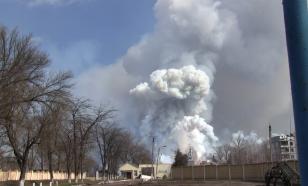4 major U.S. unions plan to boycott labour federation convention in Chicago
Four major unions decided Sunday to boycott the AFL-CIO convention, setting the stage for one or more to bolt from the 50-year-old federation in a battle over how to reverse organized labour's decades-long decline, The Associated Press has learned.
The unions, representing about one-third of the AFL-CIO's 13 million members, planned to announce the decision Sunday afternoon, a day before the convention opens, according to three labour officials familiar with the failed negotiations to avoid the walkout.
None of the four dissident unions planned to formally severe ties from the AFL-CIO on Sunday, officials said, but they are now poised to do so at a later date.
The protest is led by Andy Stern, president of the federation's largest union, the 1.8 million-member Service Employees International Union.
He is virtually certain to pull his union out of the AFL-CIO in coming days, with hopes of bringing his allies along, officials said.
Joining him in the boycott will be the Teamsters, United Food and Commercial Workers and UNITE HERE, a group of textile and hotel workers, according to the labour officials.
The four unions already had formed the Change to Win Coalition to pressure AFL-CIO President John Sweeney to undertake major changes to the federation.
Two other unions that are part of the dissident coalition had not planned to leave the Chicago convention: the Laborers International Union of North America and the United Farm Workers.
The United Brotherhood of Carpenters and Joiners of America, a member of the coalition, left the AFL-CIO in 2002.
Leaders of the dissident unions say the AFL-CIO leadership has done too little to stop the steep decline in union membership countrywide. In addition to seeking the ouster of Sweeney, they have demanded more money for organizing and the power to force mergers of smaller unions.
Sweeney's allies contend he has taken steps to reform the AFL-CIO, meeting many of the dissidents' demands in an effort to avoid a split. They say a divided house of labour will embolden employers and anti-union Republicans at the worst possible time for workers.
Globalization, automation and the transition from an industrial-based economy have forced hundreds of thousands out of unionized workers out of jobs, weakening labour's role in the workplace.
When the AFL-CIO formed 50 years ago, union membership was at its zenith with one of every three private-sector workers belonging to a labour group. Now, less than eight per cent of private-sector workers are unionized. Of the total work force, including government jobs, about 12 per cent of people belong to a union.
Stern's allies and some outside labour experts note that labour reached its peak in the 1950s while the AFL and CIO were competing against each other. Still, the prospect of a dividing labour movement worries Democratic leaders who rely on the AFL-CIO's money and manpower on election day.
In the 2004 elections, households with union members accounted for 24 per cent of the votes, and people from those households sided with Democratic candidate John Kerry by 5.8 million votes.
Unions ran nearly 260 phone banks and mailed out at least 30 million pieces of political literature in 16 states, a massive effort that primarily benefited Democrats.
"Anybody who thinks that a divided labour movement is going to make them better off ought to join George Bush's administration, because the only people who would applaud this perilous adventure is George Bush and (Bush adviser) Karl Rove," said Gerald McEntee, president of the American Federation of State, County and Municipal Employees, the largest union backing Sweeney, reported AP.
Subscribe to Pravda.Ru Telegram channel, Facebook, RSS!


